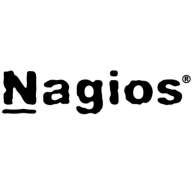

ScienceLogic and Nagios Core are competitors in the IT infrastructure monitoring and management space. ScienceLogic appears to have an upper hand with its extensive features and robust support, while Nagios Core stands out for its cost-effectiveness and flexibility.
Features: ScienceLogic offers dynamic apps, multi-tenancy support, and highly customizable features, enabling comprehensive infrastructure monitoring, advanced event management, and improved predictive analytics. Nagios Core presents a flexible and reliable system with customizable monitoring capabilities but primarily relies on community-driven plugins for additional features.
Room for Improvement: ScienceLogic users point out the complexity in its interface, reporting limitations, and issues with integrating external platforms, alongside a demand for better automation and synthetic transaction monitoring. Nagios Core users face a steep learning curve during configuration, limited graphical interfaces, and basic reporting functions, calling for improvements in error reporting and scalability.
Ease of Deployment and Customer Service: ScienceLogic supports on-premises, public, and hybrid cloud deployments, providing excellent customer and technical support recognized for its responsiveness and expertise. Nagios Core, mainly used on-premises, is valued for its open-source nature, although it lacks formal support, depending on community resources for help.
Pricing and ROI: ScienceLogic is perceived as expensive, operating on a tiered pricing model based on device numbers. Its robust features often justify its cost for enterprises looking for long-term ROI. Nagios Core, being open-source, incurs no licensing costs, offering a cost-effective option for those with the skills for self-management and customization.
The return on investment is fair but often challenged by medium-sized businesses who may question its adequacy.
I received excellent support from ScienceLogic.
Problems with Skylar may require longer wait times due to limited resource expertise.
The solution is scalable.
I tried many other solutions at work, however, in terms of Nagios, I haven't seen any disruption or downtime.
The stability rating is nine out of ten, acknowledging some bugs, but indicating these are minor issues.
While some other companies have easier APIs, using this solution demands significant expertise.
If the knowledge for implementation could be spread through articles, it would reduce this dependency.
Integrating observability and APM monitoring into the overall portfolio would be beneficial.
ScienceLogic is not that expensive and is cost-effective overall.
It could be cheaper.
It has a very handy dashboard, providing live alerts and visibility for everything.
Notably, its automation features, such as Runbook action, enable domain experts like me to execute one-click automation solutions, which contributes significantly to reducing MTTR.
The solution excels in three areas: application monitoring, server monitoring, and network performance monitoring.
The CMDB update and the automatic CMDB update are valuable.


This is IT infrastructure monitoring's industry-standard, open-source core. Free without professional support services.
ScienceLogic is a comprehensive IT infrastructure monitoring solution that supports networks, servers, cloud environments, and applications, suitable for private cloud and on-premises deployments.
Organizations leverage ScienceLogic for its robust capabilities in monitoring IT infrastructures of all sizes. It offers granular discovery, integration with CMDB, and ticketing systems. Valued for its flexibility, incident automation, remediation, and real-time relationship mapping, it supports hybrid environments with scalable and efficient monitoring functionalities. AI and machine learning enhance its feature set, while ease of deployment and strong support are crucial benefits.
What are ScienceLogic's most important features?ScienceLogic is implemented across multiple industries, including large enterprises, for its capability to handle complex IT ecosystems. Its integration with CMDB and ticketing systems ensures it fits within existing workflows. Organizations use it to monitor diverse infrastructure landscapes, ensuring seamless performance and quick incident resolution.
We monitor all IT Infrastructure Monitoring reviews to prevent fraudulent reviews and keep review quality high. We do not post reviews by company employees or direct competitors. We validate each review for authenticity via cross-reference with LinkedIn, and personal follow-up with the reviewer when necessary.